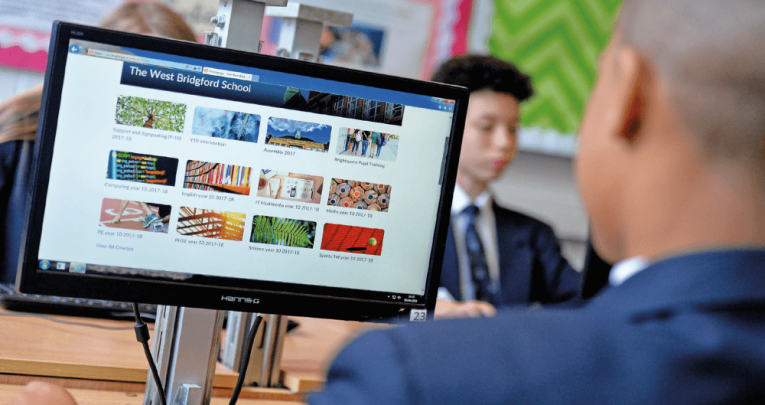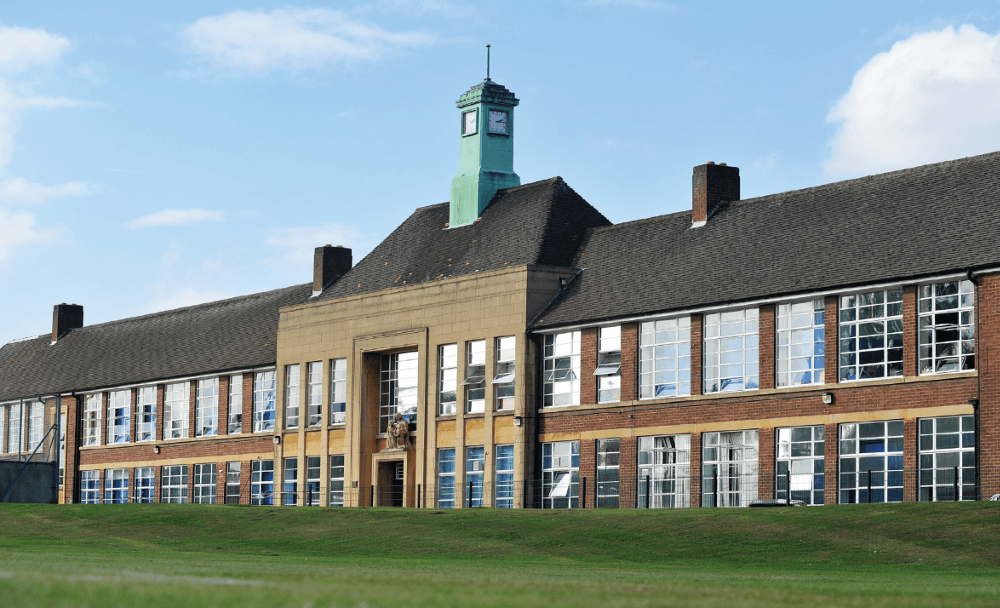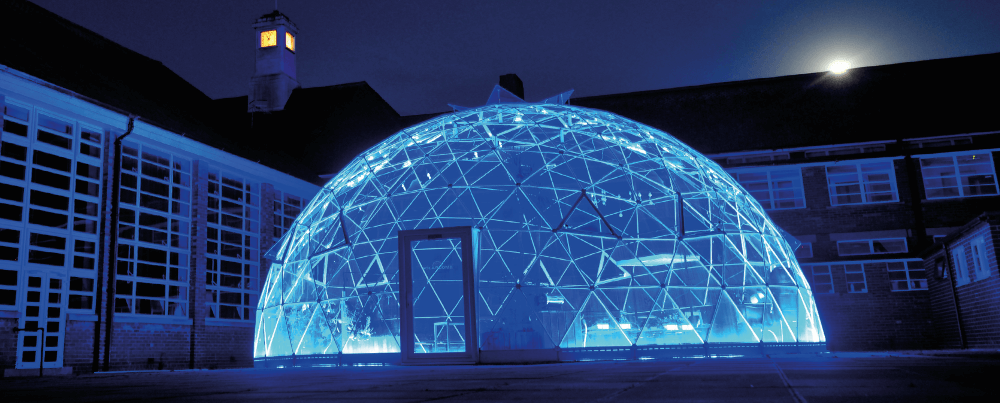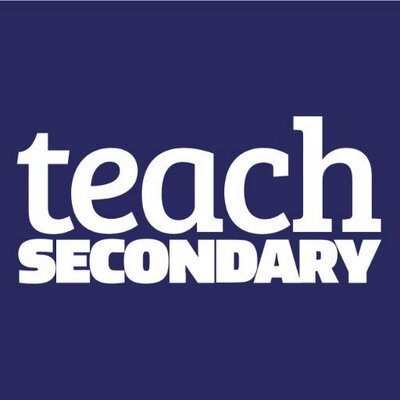Blended learning – How one school was ahead of the curve with Covid lockdown

Deputy headteacher Mark Deans describes how West Bridgford School was ahead of the curve when it came to building its remote learning provision…

West Bridgford School is what you might describe as a classic ‘leafy suburb’ school. We’re a mixed comprehensive in a southern area of Nottingham, with student population of 1,600, and very lucky to have great parents and students.
 We’re also fortunate to have a headteacher who, early on, bought into the idea of using technology in the classroom and extending the use of technology-assisted learning into the home.
We’re also fortunate to have a headteacher who, early on, bought into the idea of using technology in the classroom and extending the use of technology-assisted learning into the home.
I was appointed as a deputy head around 10 years ago, with a specific remit to develop our home to school communication technology.
At the time, I was head of the IT and computing department and a senior IT and computing examiner, having been of the ZX81 generation and developed a love of tech from an early age.

Marginal gains
Our head is a keen cyclist, and became very taken with Dave Brailsford’s ‘marginal gains’ philosophy, As such, we’ve always been searching for marginal gains ourselves, looking for the next strategy that will improve our students’ access to learning.
We knew back then that homework wasn’t being used very effectively, with parents, students, and teachers often feeling that it was being done simply for the sake of ‘being done’.
If we wanted to make gains in this area, students would need to see learning at home as something worthwhile, tailored to them and easily accessible.
However, it wouldn’t have been enough to announce ‘Okay, we’ve now got a new virtual learning system – off you go, teachers.’ If we had, the whole project would have been an absolute disaster.
We therefore drew up a clear project plan and established our aims, recognising that teachers, parents and students alike would need to understand the project plan over time and where we were going with it.
Less work, better outcomes
Teachers can sometimes be their own worst enemies, in that they’ll do everything in their power to try and improve outcomes for children, working above and beyond the call of duty.
Our approach was to explain that instead of taking in 30 essays and writing extensive feedback on each, they could get better outcomes from using interactive quizzes.
They would need to invest effort upfront in building the quiz and drafting the feedback students saw for correct, close or incorrect answers – but they’d then have a resource that could be used annually to give high quality feedback and provide students with a great learning experience.
Some teachers found the idea of getting good or better outcomes by doing less work a little difficult to get their heads around, at first, but if you have the right tool and appropriate staff training in place, you can deliver.
We introduced the new provision in years 7 and 10 at first, so that our teachers wouldn’t feel overburdened by it. Our thinking was that if we could secure that gain in the first year, our teachers would then feel encouraged by our expansion of the platform to other year groups.
After a year of using Moodle we came to realise that our next big gain would necessitate moving to a different learning platform, so we went shopping.
We came across D2L’s Brightspace VLE through Trent University – a university local to us with whom we often partner – which credited Brightspace with much of its recent success at the time, especially its online environment.
That was three years ago.

From the ground up
Earlier this year, we were able to spot the coronavirus disruption coming. We commenced training for staff around lockdown planning in late February and liaised with Brightspace in early March.
When we’ve used other learning tools, the tool itself is often all there is. By comparison, Brightspace lets us approach individuals there and ask what we need to do to deliver the outcomes we want.
We were told that they could give us rapid access to live online classrooms, so the following week we had live teachers, teaching in their own groups to students with whom they’d already built a productive relationship.
Shortly after, we rolled Y10 and Y11 into full-time timetables, the only differences being slightly bigger gaps between lessons to allow for short breaks.
Around the same time, we carried out an extensive survey of the equipment our students had at home and their ability to access our provision. We were initially concerned at how many had migrated from using laptops several years before to phones and tablets.
A number of households also connected to the internet through 3G or 4G dongles rather than via broadband, but Brightspace was able to design our provision from the ground up to work with mobile devices, removing that barrier.
A winter challenge
While the vast majority of students have engaged with the work they were set, some did struggle during lockdown.
For them, we’ve been able to provide remote learning interventions aimed at helping them catch up, backed by a range of remote learning resources that we’ve produced over the last three years.
What’s key for us now is planning for the inevitable wave of incoming local lockdowns. It was comparatively easier to plan around the general lockdown earlier in the year – with the school entirely locked down, we could concentrate on providing a full virtual timetable.
Lockdown actions targeted at specific year groups and bubbles will entail staff juggling timetables that might see them teaching in-school classes for some periods and teaching virtually in others.
Providing high-quality provision that allows for that kind of mixed response will be much more challenging.
That’s essentially the challenge government currently faces at a national level – encouraging the use of provision like ours, while utilising economy of scale so that individual children are able to have their specific needs properly met by a robust deployment of technology.
The real lesson we’ve learned from lockdown is that the teachers who thrived in that online environment were those who could continue building on their existing relationships with their students.
That’s made considerably easier if your online environment enables teachers to reliably communicate with students and pass assessment materials back and forth with accompanying feedback.
I can see how there might be the temptation for policymakers to conclude, ‘Let’s roll out a big, centralised resource from which people can access some nice videos and animations – job done.
But that not how you maximise learning. You maximise learning with the help of individual teachers using a tool that’s managed properly, while providing a service to children who they know well.
Marc Elston
History Teacher
“As an ageing history teacher, I was a little sceptical about Brightspace at first. I’ve seen digital platforms come and go, and it seemed like yet another new thing to learn that might disappear as quickly as it had arrived. Yet I quickly established that Brightspace offered lots of potential for sharing historical sources.
‘YouTube has become a fantastic repository for history clips that we can now regularly share in classroom discussions. It’s possible to take students ‘off piste’ and broaden their cultural capital by sharing art, literature and music related to the syllabus.
‘I’ve personally used WWI poetry, art from different historical periods and music by the likes of Bob Dylan and Gil Scott Heron to take students slightly beyond the syllabus in ways that still relate to their historical knowledge.
‘Brightspace has also helped to provide a ‘safe space’ for students who often find it difficult to discuss things in class, enabling them to communicate and share their ideas with me via discussion forum threads where I can easily provide feedback and offer guidance.”
Mark Deans is a deputy headteacher at West Bridgford School; for more information, visit wbs.school or d2l.com.












